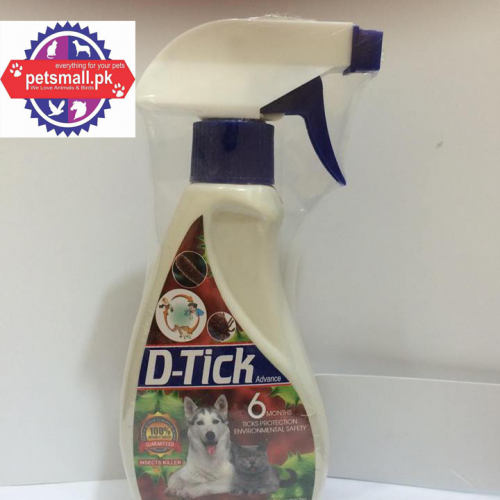Your Comprehensive Solution for All Types of Tick Infections. Ticks, those tiny arachnids that thrive in grassy, wooded regions and latch onto unsuspecting hosts, pose a considerable risk to each pet and human being. Those blood-sucking parasites are notorious providers of sicknesses, making tick infestations a grave challenge. This article delves into tick infestations, exploring their life cycle, capacity health dangers, symptoms, prevention, and powerful management strategies.
Health Risks:
Ticks are notorious vectors of various illnesses affecting humans and animals. As they feed on blood, ticks can transmit pathogens, including microorganisms, viruses, and protozoa, from one host to another. Some famous tick-borne illnesses encompass Lyme disease; Rocky Mountain spotted fever, ehrlichiosis, anaplasmosis, and babesiosis. If left untreated, those illnesses can result in several signs, from slight flu-like signs to greater extreme and potentially deadly situations.
The Existence Cycle of Ticks
Ticks have a complicated four-stage existence cycle: egg, larva, nymph, and person. Information in this cycle is critical in comprehending their behavior and the first-class procedures for coping with infestations.
Egg:
Lady ticks lay masses of eggs, generally in grassy or wooded areas, where they are more likely to encounter a number.
Larva:
After hatching, tick larvae try to find a small host, frequently a rodent or chook, to feed on. That is commonly not after they pose a danger to pets or humans.
Nymph:
Nymph ticks emerge from the larvae level and actively look for an enormous host, which includes pets or human beings, to connect to and feed on.
Adult:
After engorging on blood, nymphs molt into adult ticks. Girl adults connect to hosts for a blood meal to nourish their eggs, even as male adults seek women to mate with before dying.
D-Tick Spray 300 ml
visit our store for more products.
Potential fitness dangers
Ticks are vectors of various illnesses, including Lyme disorder; Rocky Mountain spotted fever, ehrlichiosis, anaplasmosis, and others. These illnesses can result in multiple signs and symptoms, from moderate discomfort to extreme conditions. Lyme disease, for example, can motivate joint aches, fever, and fatigue in each pet and human being if left untreated.
Signs of Tick Infestations
For both pets and people, signs of tick infestations can include:
Itching and Scratching:
Pets may additionally display excessive scratching or biting at the site of the tick attachment.
Skin inflammation:
Redness, swelling, and irritation can develop across the tick bite vicinity.
Lethargy:
Infested pets may additionally end up torpid or show signs and symptoms of weak points.
Fever:
A fever may additionally broaden because the body responds to tick-borne pathogens.
Joint pain:
In some cases, joint pain and lameness may also occur due to tick-borne sicknesses like Lyme.
Prevention and management
Stopping tick infestations is vital, and various techniques can help:
Tick manipulate merchandise:
Utilize tick control products, including spot-on remedies, collars, and oral medicines. Those products can repel ticks or kill them once they connect.
Regular Inspections:
Conduct everyday tick assessments on pets after outside sports specializing in hidden regions like ears, paws, and armpits.
Landscape maintenance:
Preserve lawns well-maintained and clear of tall grass and debris, reducing tick habitats.
Tick-Repellent clothing:
Wear tick-repellent clothing and use insect repellents containing DEET while venturing into tick-prone areas.
Activate elimination:
If a tick is located, use quality-tipped tweezers to grasp it as close to the pores and skin’s floor as feasible and pull upward with regular, even pressure. Very well easy the vicinity later on.
While prevention is essential, it’s equally crucial to be prepared in case of a tick infestation. If you suspect a tick has attached itself to your pet or yourself, taking immediate action is vital:
- Safe Removal: As mentioned earlier, use fine-tipped tweezers to grasp the tick near the skin’s surface and gently pull it upward with steady pressure. Avoid twisting or jerking, as this can cause parts of the tick to break off and remain in the skin.
- Disposal: Once removed, place the tick in a sealed container, such as a small plastic bag, and save it for potential identification by a healthcare professional if needed.
- Clean the Area: Thoroughly clean the bite area with soap and water or an antiseptic to prevent infection.
- Observation: Monitor the area for signs of infection or an allergic reaction, such as redness, swelling, or a rash. If symptoms develop, seek medical attention promptly.
- Seek Veterinary Care: For pets, if you encounter a tick infestation or notice any unusual symptoms, consult a veterinarian. They can provide appropriate treatment and guidance based on your pet’s situation.
As with many health concerns, education plays a significant role in combating tick infestations. Raising awareness about the risks of ticks and the importance of preventive measures is crucial in minimizing their impact on pets and humans.
The threat posed by tick infestations cannot be underestimated. These tiny parasites can potentially cause significant harm to our beloved pets and ourselves. By understanding their life cycle, recognizing the symptoms of infestations, and implementing effective prevention and management strategies, we can take proactive steps to ensure the well-being of our families and furry companions. Remember, knowledge and proactive measures are our strongest allies in the fight against tick-borne diseases.
There’s no compromise regarding the health and well-being of our cherished pets. That’s why Pets Mall and Pets Clinic .pk have emerged as the go-to destination for comprehensive pet care, specializing in addressing all types of tick infections. Led by the experienced and dedicated Dr. Sami, our establishment offers a holistic approach to managing tick-related concerns.
A One-Stop Solution:
At Pets Mall and Pets Clinic .pk, we understand the urgency and seriousness of tick infections in pets. These tiny arachnids can bring about significant discomfort and potential health risks. That’s why we have curated a range of products and services specifically tailored to combat ticks and the diseases they may carry. Your pet’s well-being is covered from top-quality tick control products to personalized treatment plans.
Meet Dr. Sami:
Dr. Sami drives Pets Mall and Pets Clinic .pk’s commitment to exceptional pet care. With years of experience and expertise in veterinary medicine, Dr. Sami is well-versed in the complexities of tick-borne diseases and is known for his compassionate approach to handling pets. His dedication to staying updated on the latest tick treatment and prevention advancements ensures that your furry friends receive the best care possible.
Pet’s Mall and Pet Clinic
Pet’s Mall and Pet Clinic in Lahore is the best place for your pets. Dr. Sami is a fantastic vet there, and he has a super team and excellent equipment. If your pet needs help, this is the place to go. They have everything your pet might need and care about making it feel better. So, if your pet is sick or you need pet stuff, check out Pet’s Mall and Pet Clinic. Your pet will thank you!
CONTACT US
- 34 Q Block, Johar Town, Shah Alam Road, Near Ayub Chowk, Lahore
- 0313-4343476
- petsmallpk@gmail.com
Popular Post
How to choose a training
Top tips for caring for
Tips for keeping your cat
Archives
Tags
Email for newsletter
At Pets Mall, we offer premium quality dog and cat food, pet supplies, and vaccination. Get everything you need for your pet!
If you pets need immediate veterinary’s treatment, give us a call and we will send a specialist vet to your home.
- 34 Q Block, Johar Town, Shah Alam Road, Near Ayub Chowk , Lahore
- petsmallpk@gmail.com
- 0301-7475573 , 0313-4343476
COPYRIGHT © PetsMall.pk ALL RIGHTS RESERVED. | DEVELOPED BY DIGIKNOWN












